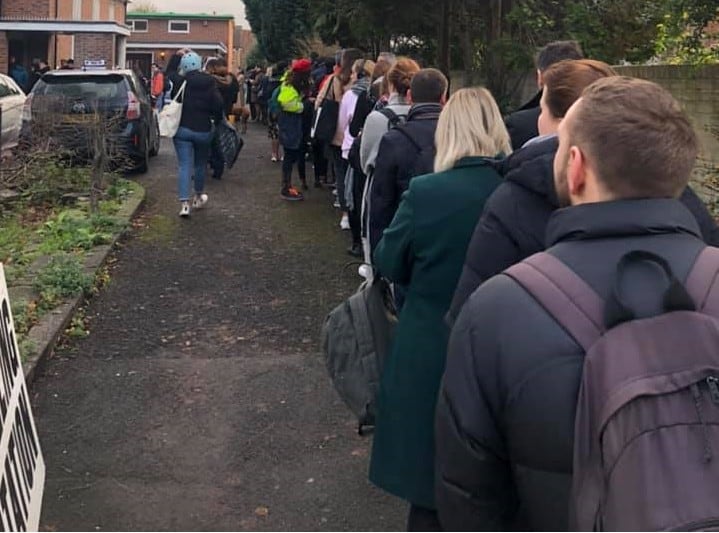
Voters have reported “huge queues” at polling stations as the threat of a low turnout is quashed.
People have taken to social media to show lines of people weaving around buildings and waits of up to an hour to vote as Brits head out in their droves to cast their vote.
“Queues at polling stations” was competing with the traditional “Dogs at polling stations” on Twitter, with reports of a large youth turnout also evident.
Labour strategists are hopeful that a high turnout could see them defy the polls and be in Downing Street by Friday.
A record number of applications were submitted to vote on deadline day this year, with nearly 700,000 people applying.
A staggering 3.85 million applications were submitted just since October 29 this year – the day that MPs voted to hold an election on December 12.
Even more significantly, there has also been a massive increase in people registering to vote in the three months before the election since the last election in 2017:
2017: 3,849,453
2019: 6,030,720
Of that number, 37 per cent have been submitted by people aged under 25, while 30 per cent have come from people aged 25 to 34.
By contrast, just 4 per cent were from people aged 65 and over.
Elsewhere, Boris Johnson did not voted for himself today after registering to vote in Westminster rather than his own marginal London constituency.
The Prime Minister broke with a tradition set by his recent predecessors and voted at Methodist Central Hall, near Downing Street, at around 8.15am.
Incumbents of Number 10 have in the past voted in the constituency they lived in while serving as an MP.
He opted to vote in central London despite a heavy tactical voting campaign to oust him from his own Uxbridge and South Ruislip seat.
Mr Johnson took the seat with a 5,034 majority at the snap election two years ago but pro-European Union campaigners have urged Remainers to unite behind Labour’s Ali Milani in a bid to topple the former London mayor this time round.